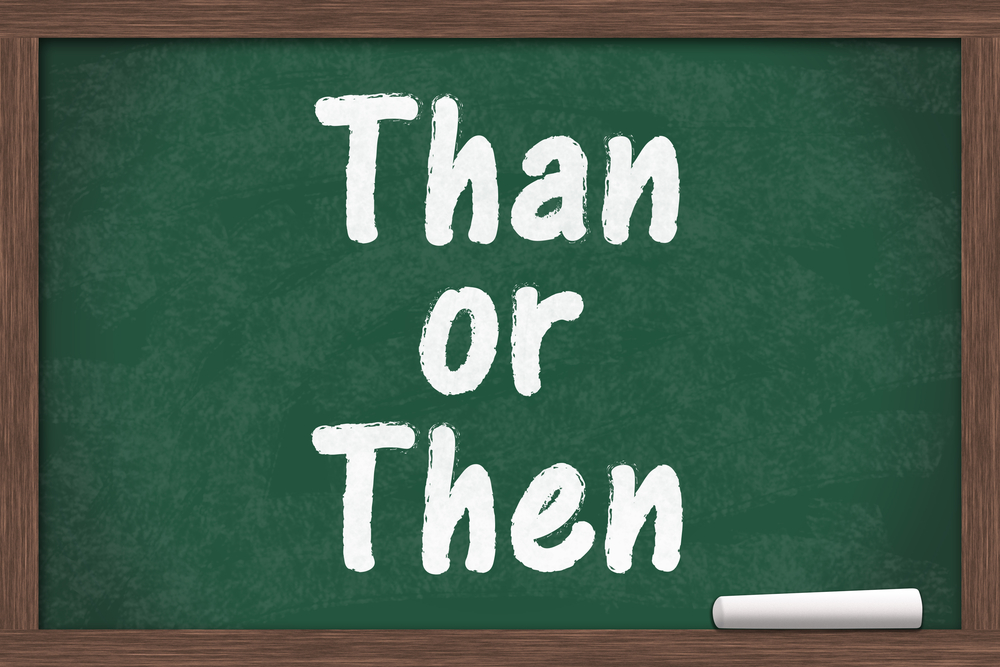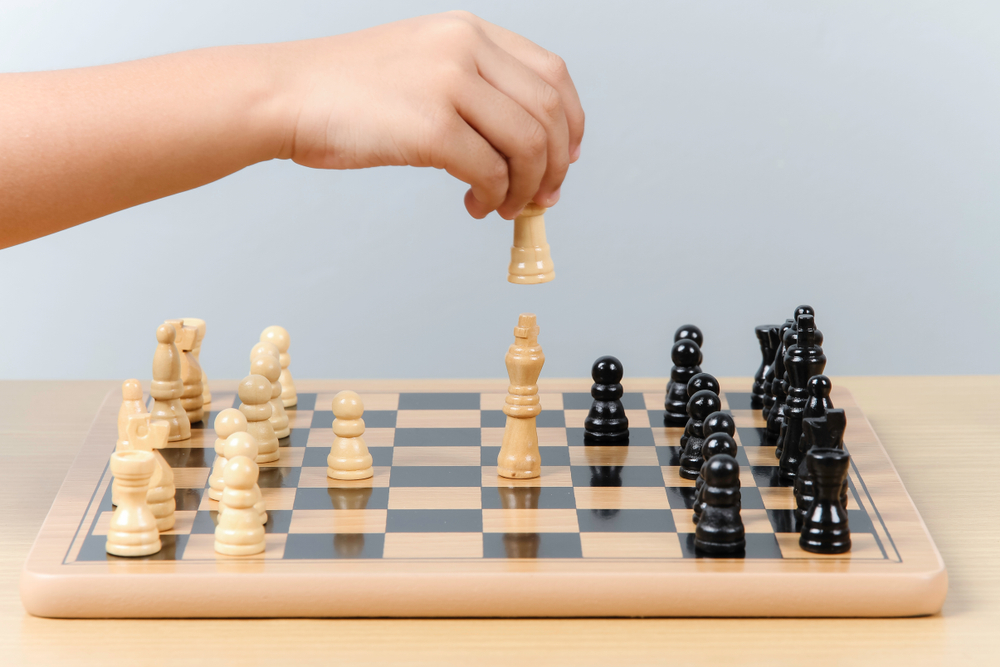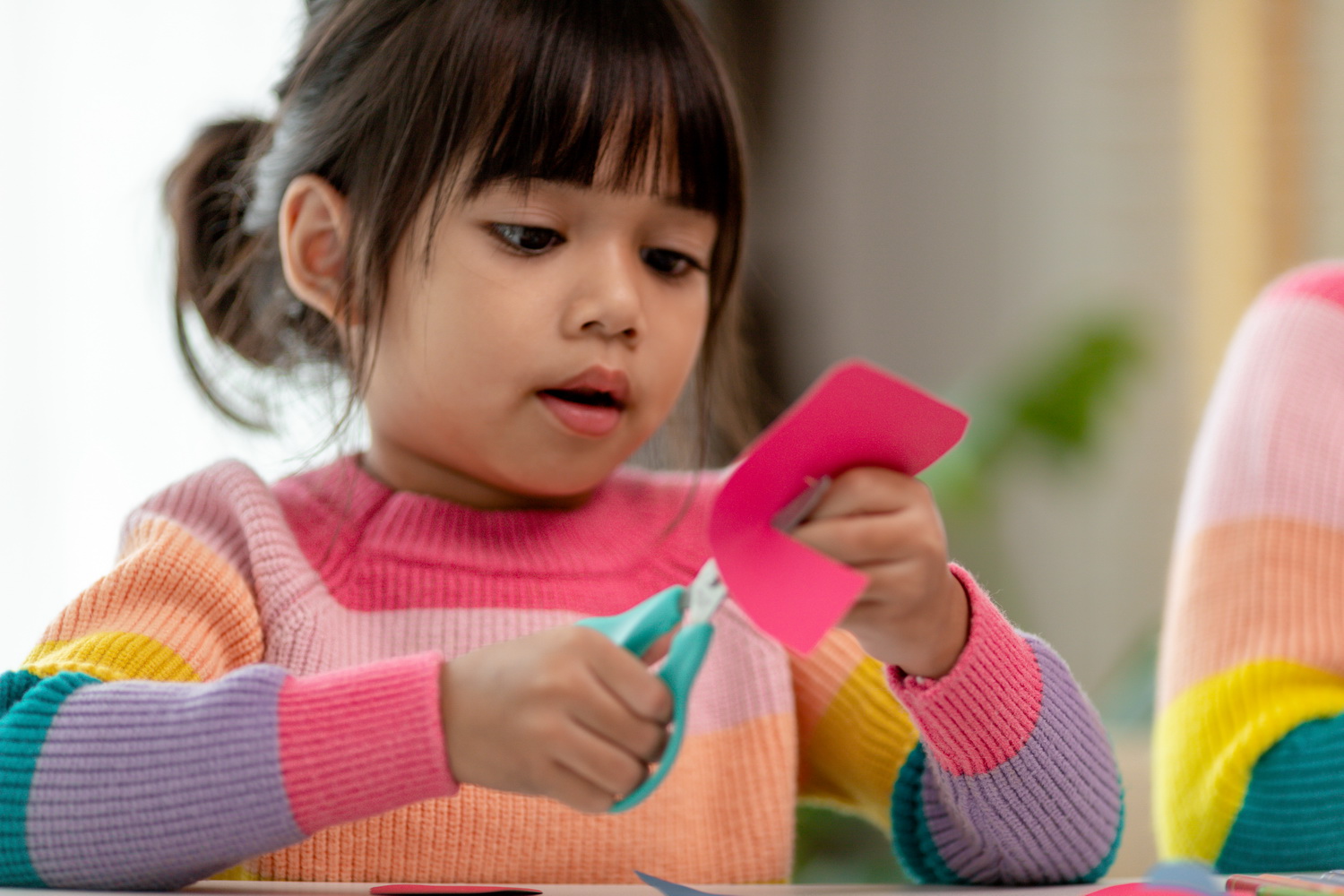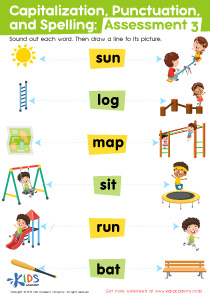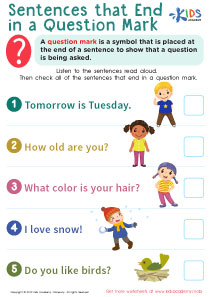Cursive writing practice Writing Worksheets for Ages 5-9
21 filtered results
-
From - To
Discover our engaging cursive writing practice worksheets designed specifically for children aged 5-9! These printable resources are perfect for enhancing fine motor skills and boosting handwriting confidence. Featuring fun, age-appropriate activities, our worksheets help students master letter formation and improve their writing fluency. Equipped with colorful illustrations and interactive exercises, children will enjoy learning how to write in cursive while developing their creativity. Whether in the classroom or at home, our cursive writing practice worksheets provide a supportive foundation for young learners. Start your child’s cursive writing journey today and watch their skills flourish with each stroke!
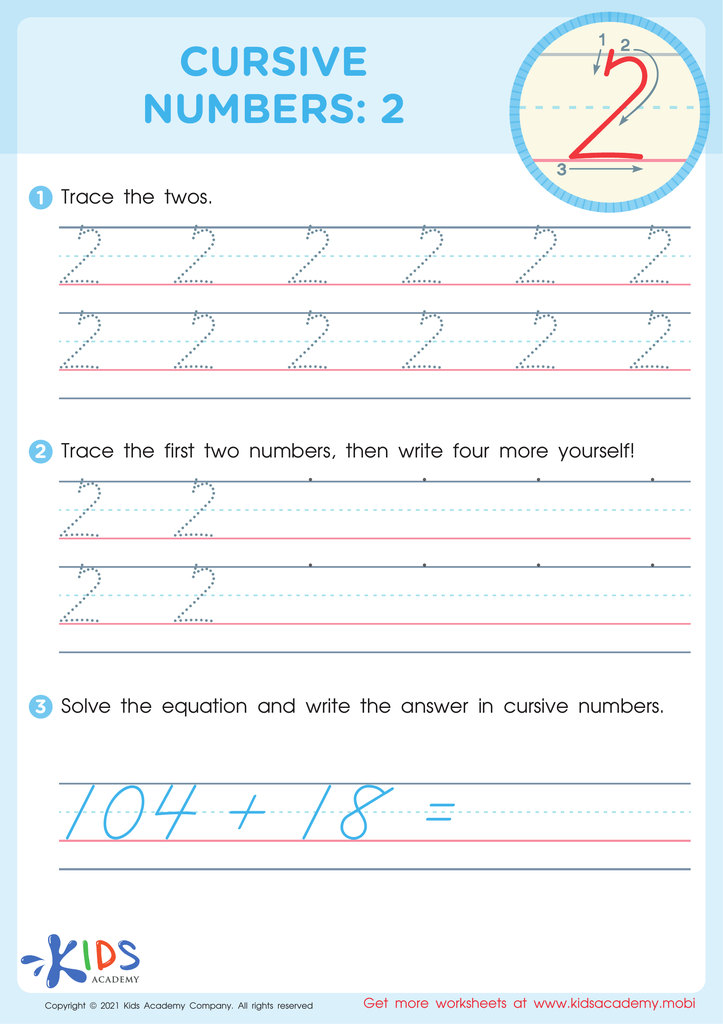

Cursive Numbers: 2 Worksheet


Cursive Numbers: 6 Worksheet
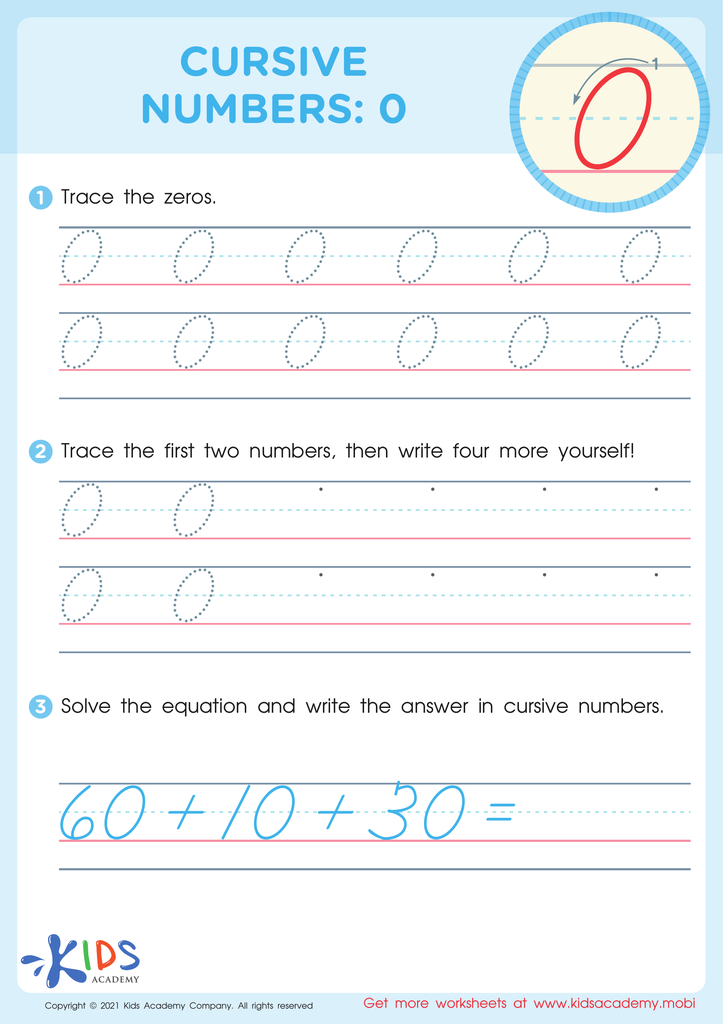

Cursive Numbers: 0 Worksheet
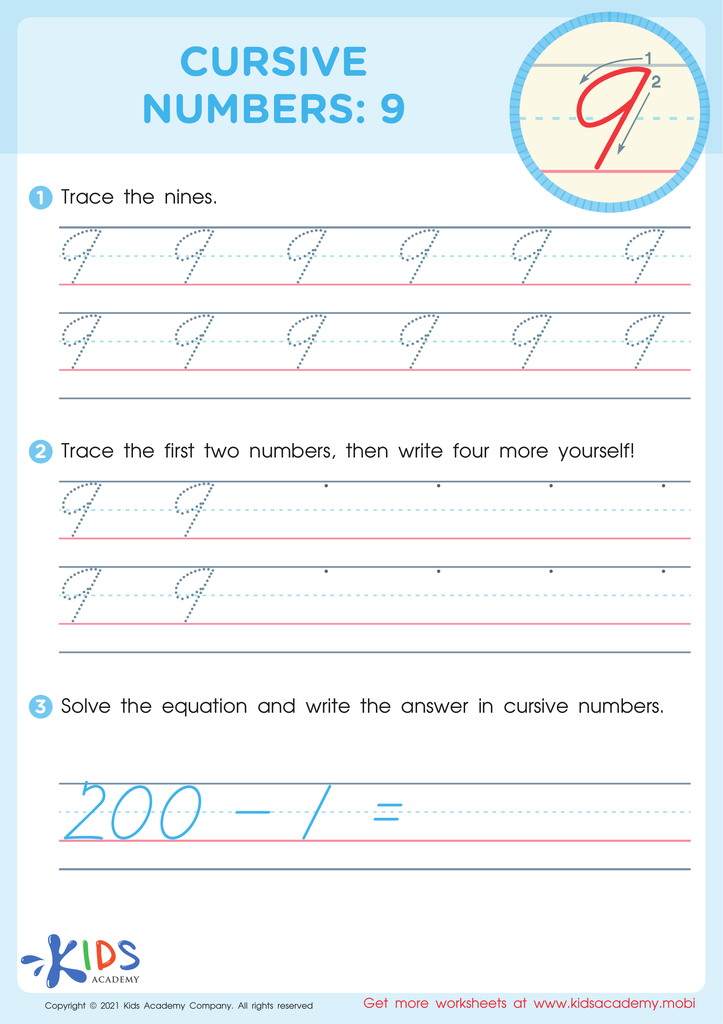

Cursive Numbers: 9 Worksheet
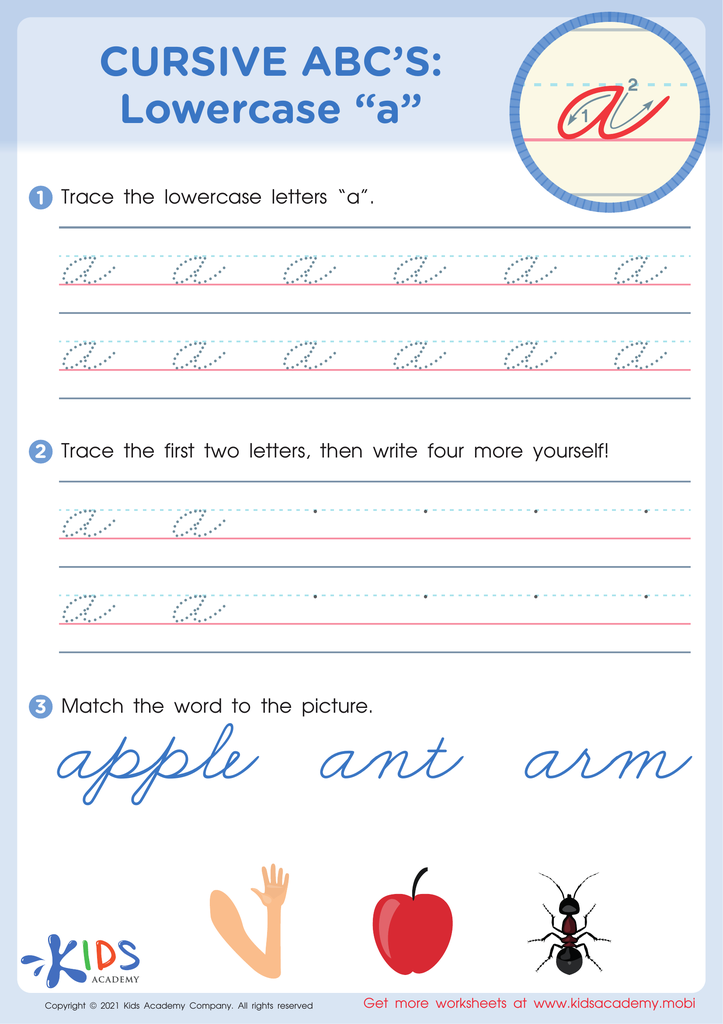

Cursive ABCs: Lowercase a
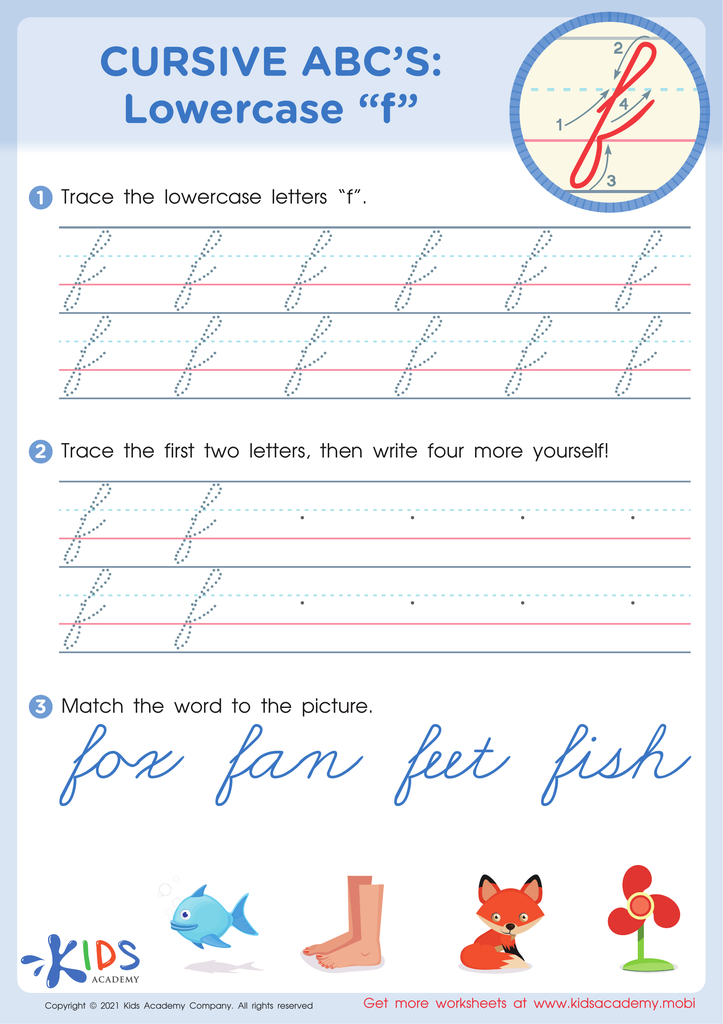

Cursive ABCs: Lowercase f
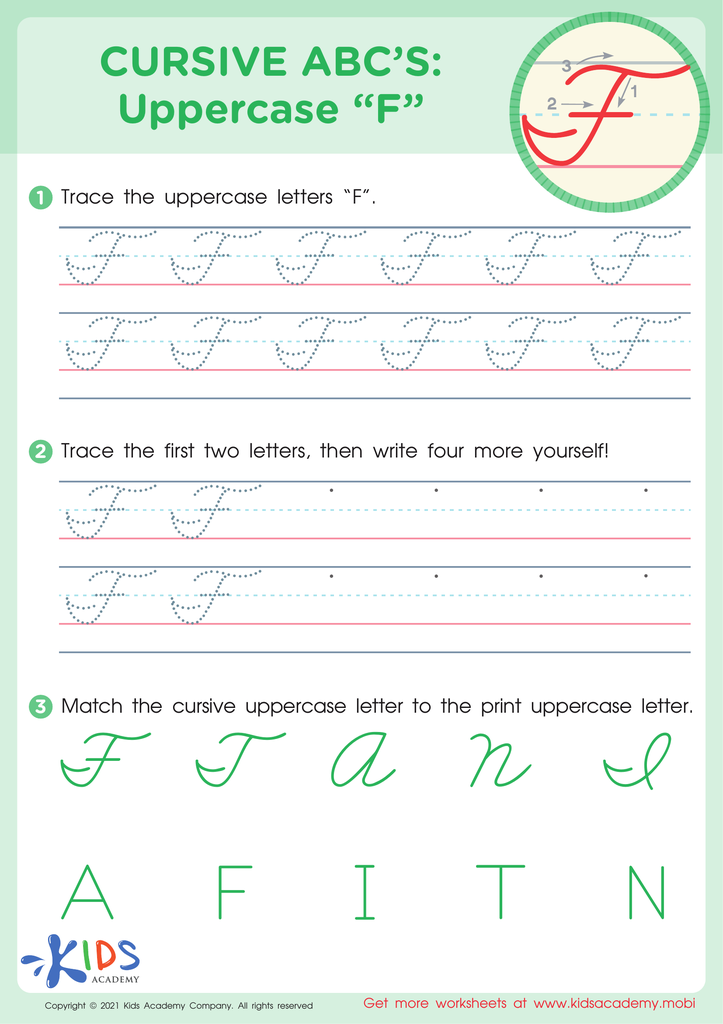

Cursive ABCs: Uppercase F
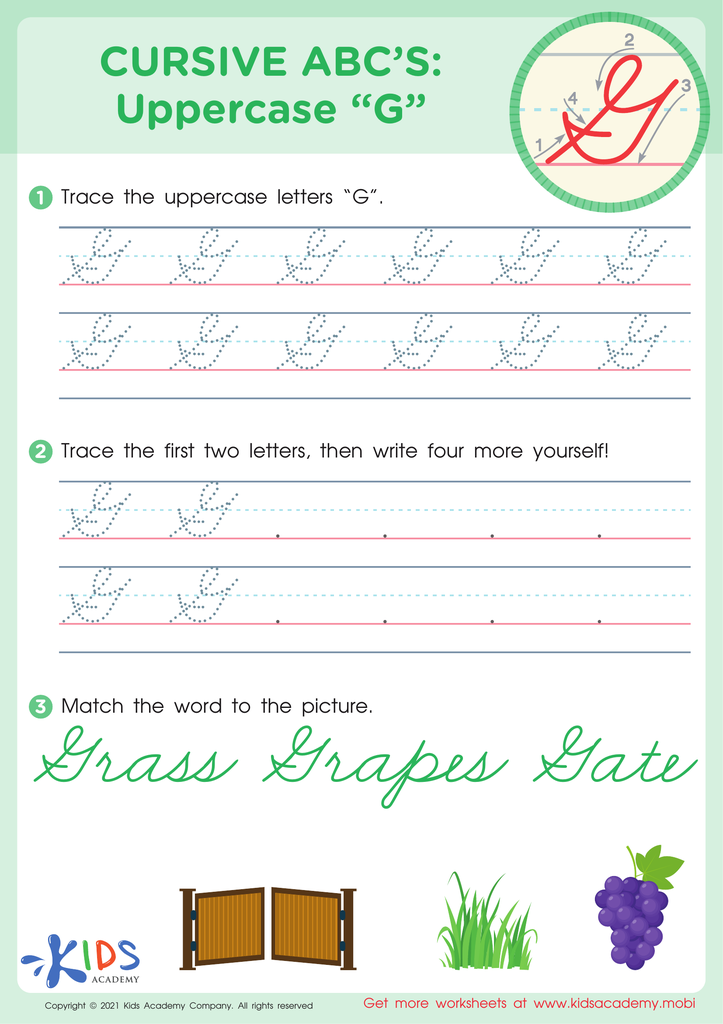

Cursive ABCs: Uppercase G
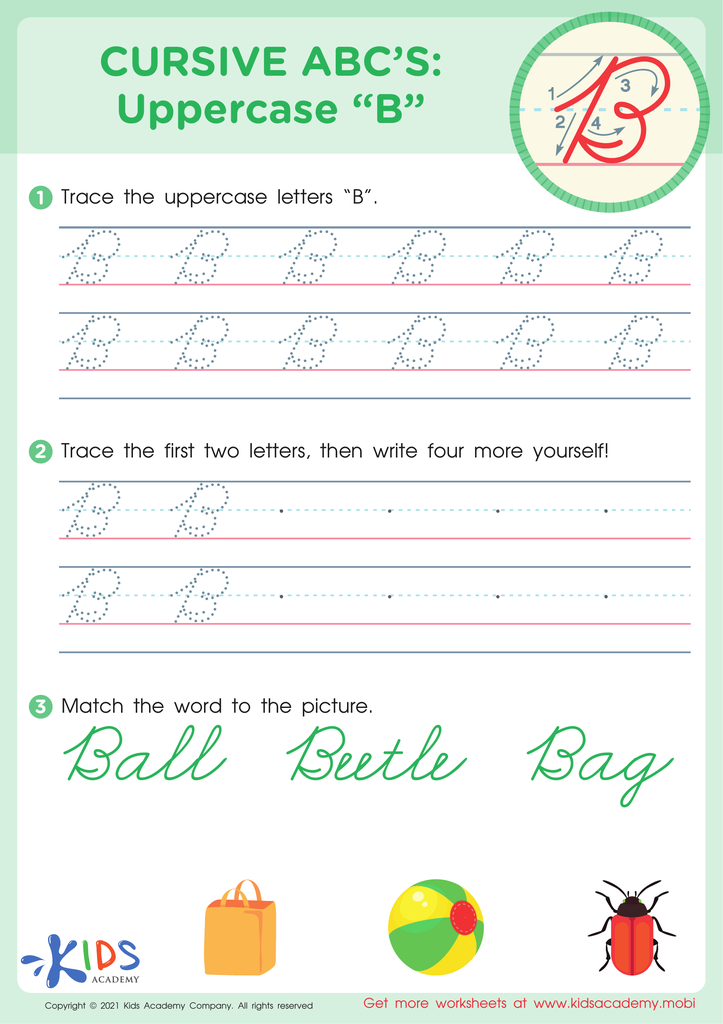

Cursive ABCs: Uppercase B
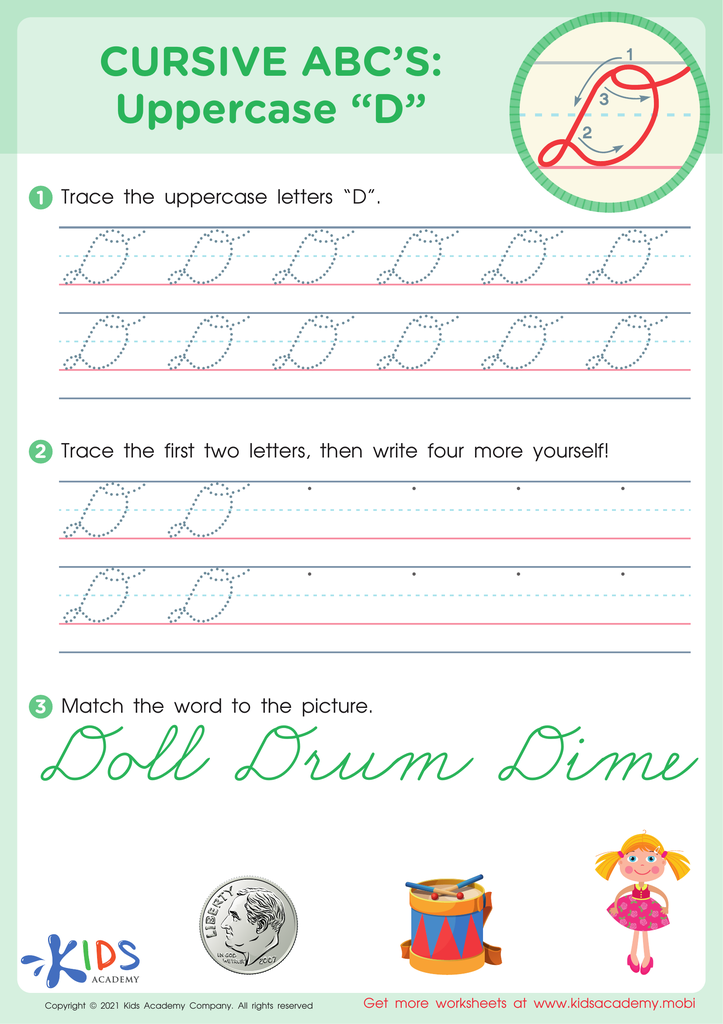

Cursive ABCs: Uppercase D
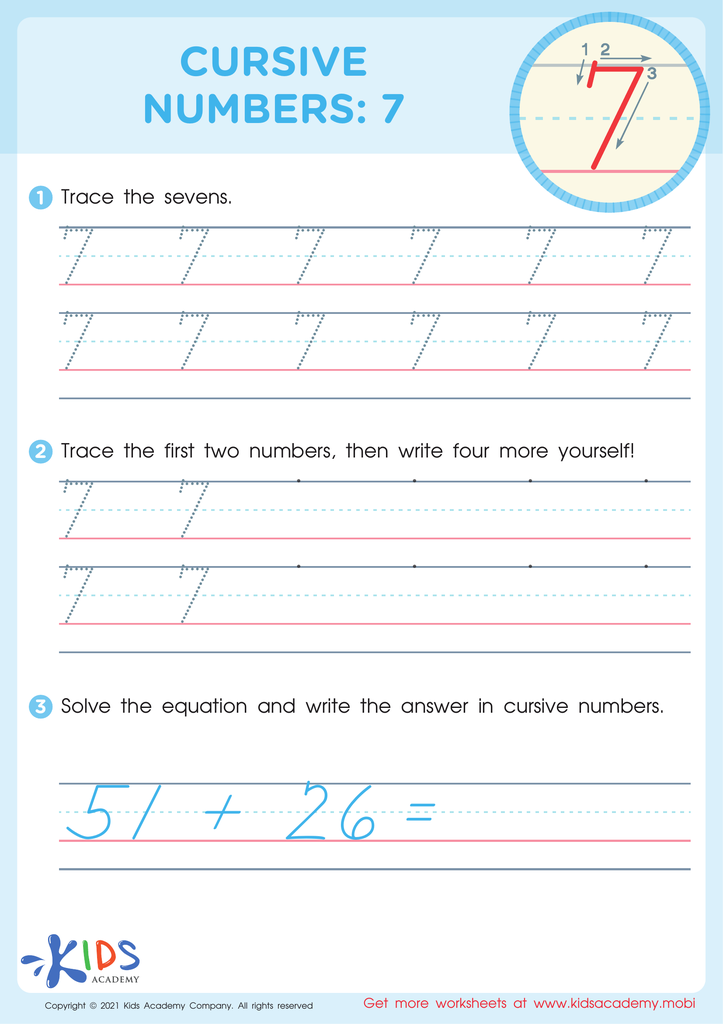

Cursive Numbers: 7 Worksheet
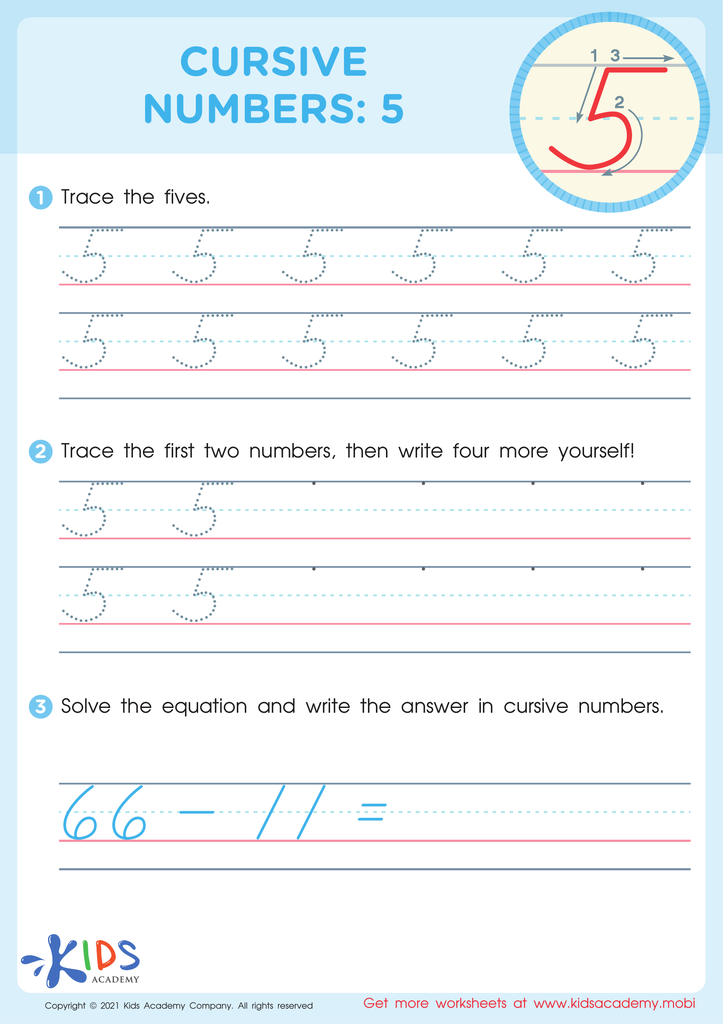

Cursive Numbers: 5 Worksheet
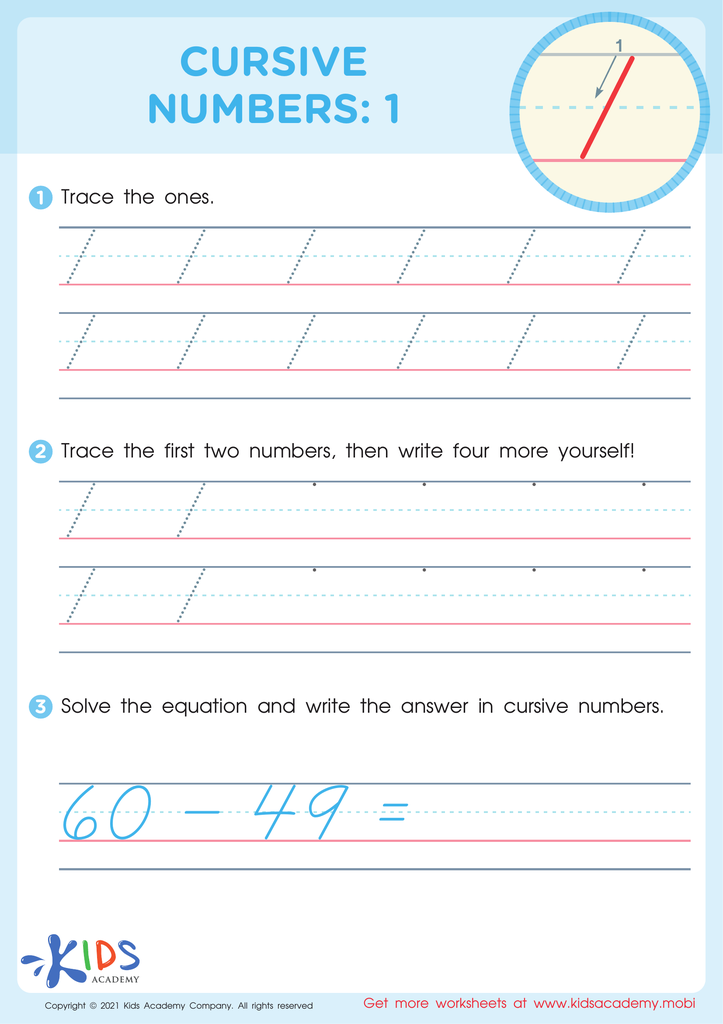

Cursive Numbers: 1 Worksheet
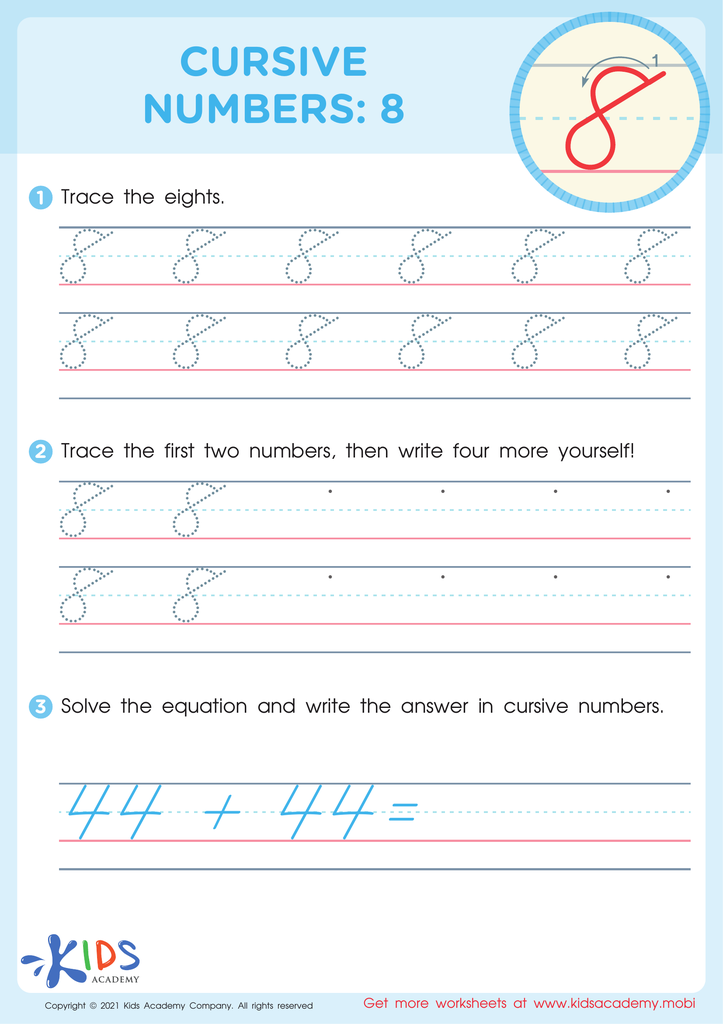

Cursive Numbers: 8 Worksheet
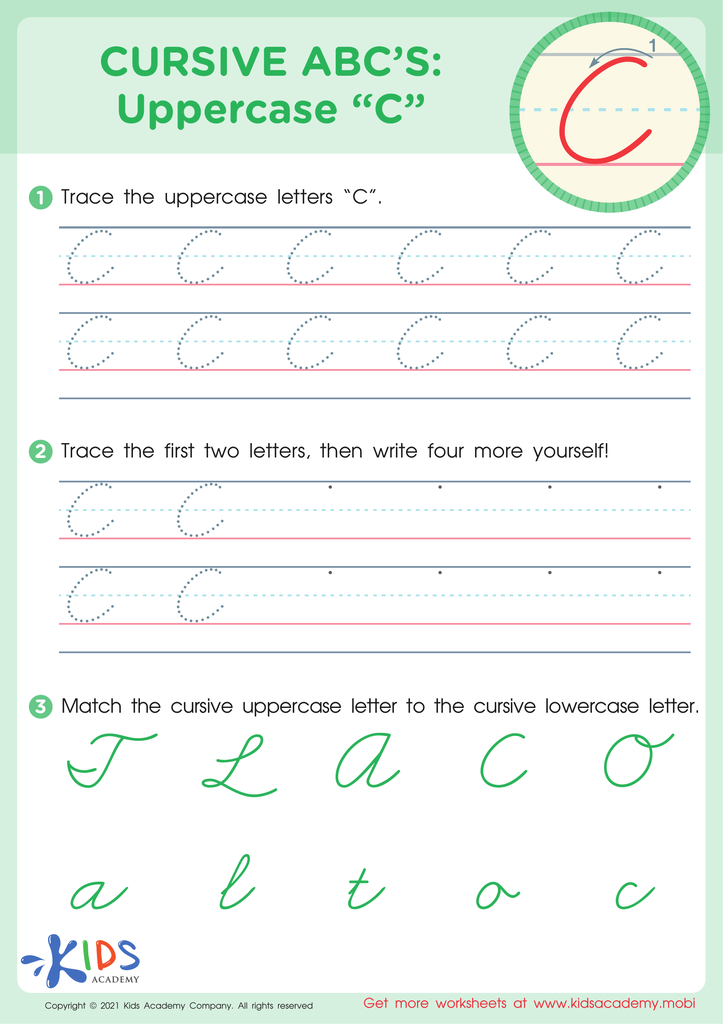

Cursive ABCs: Uppercase C
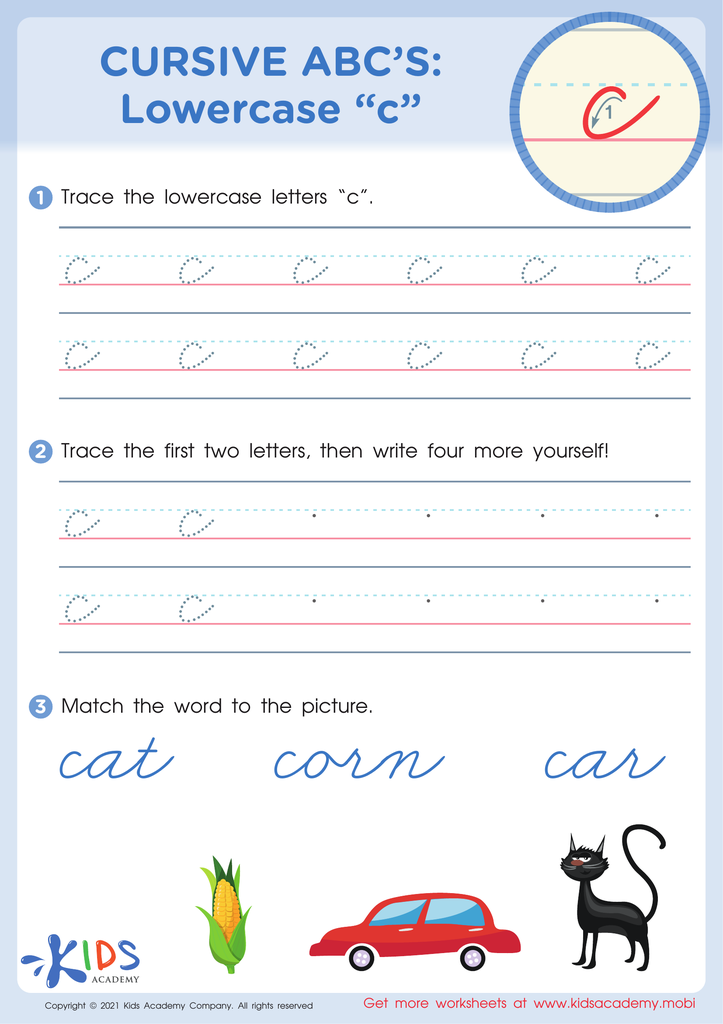

Cursive ABCs: Lowercase c


Cursive ABCs: Lowercase h
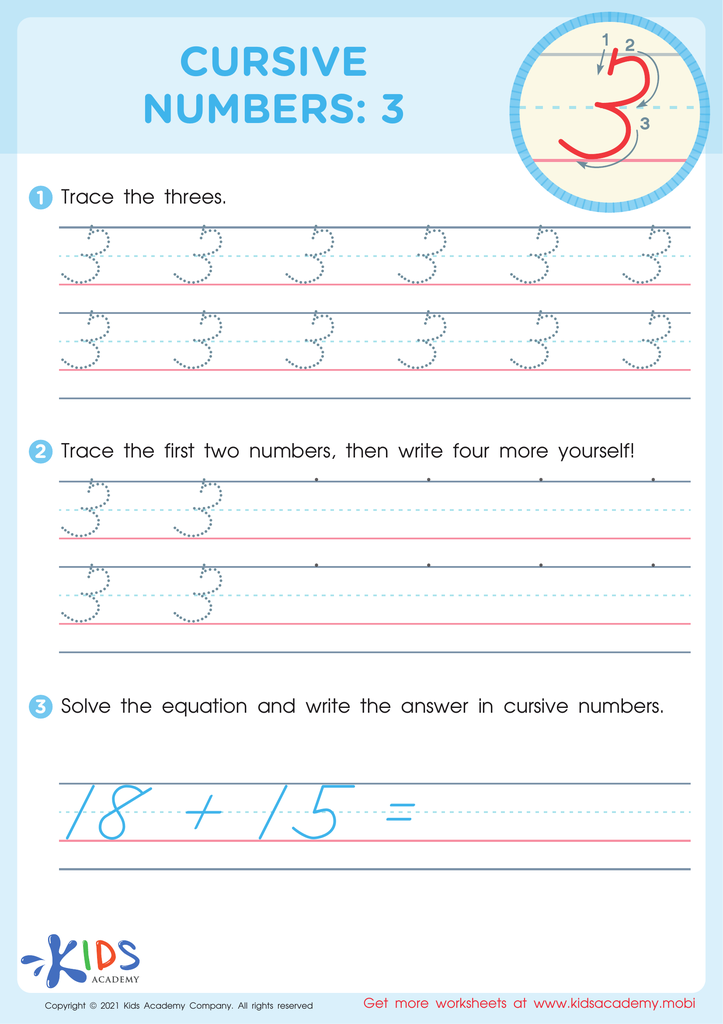

Cursive Numbers: 3 Worksheet


Cursive ABCs: Lowercase e
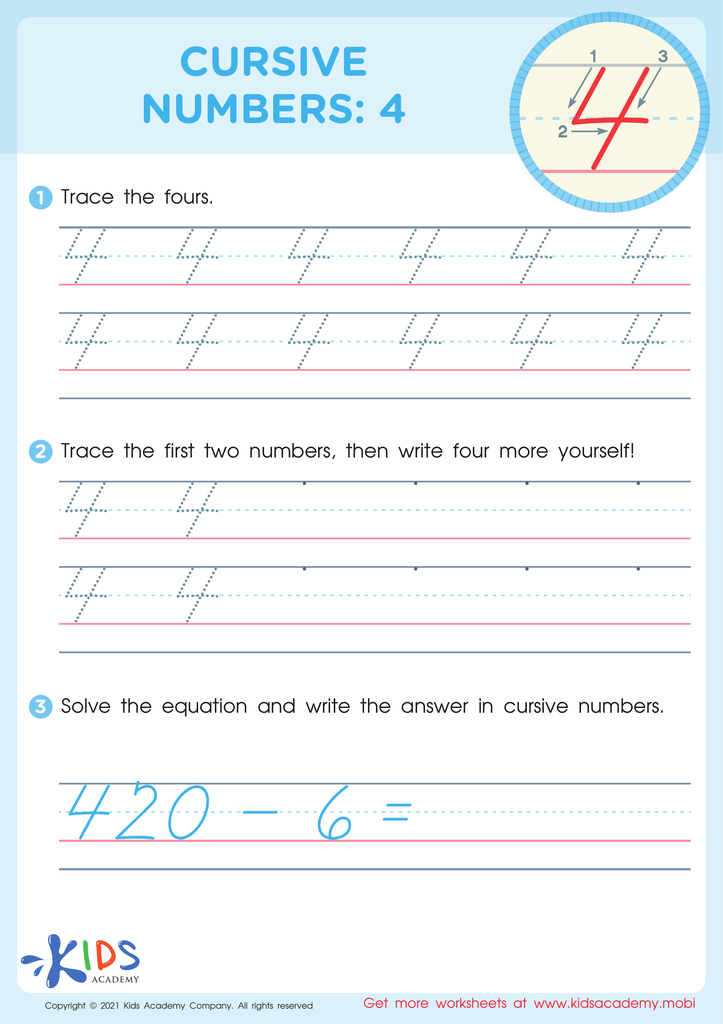

Cursive Numbers: 4 Worksheet
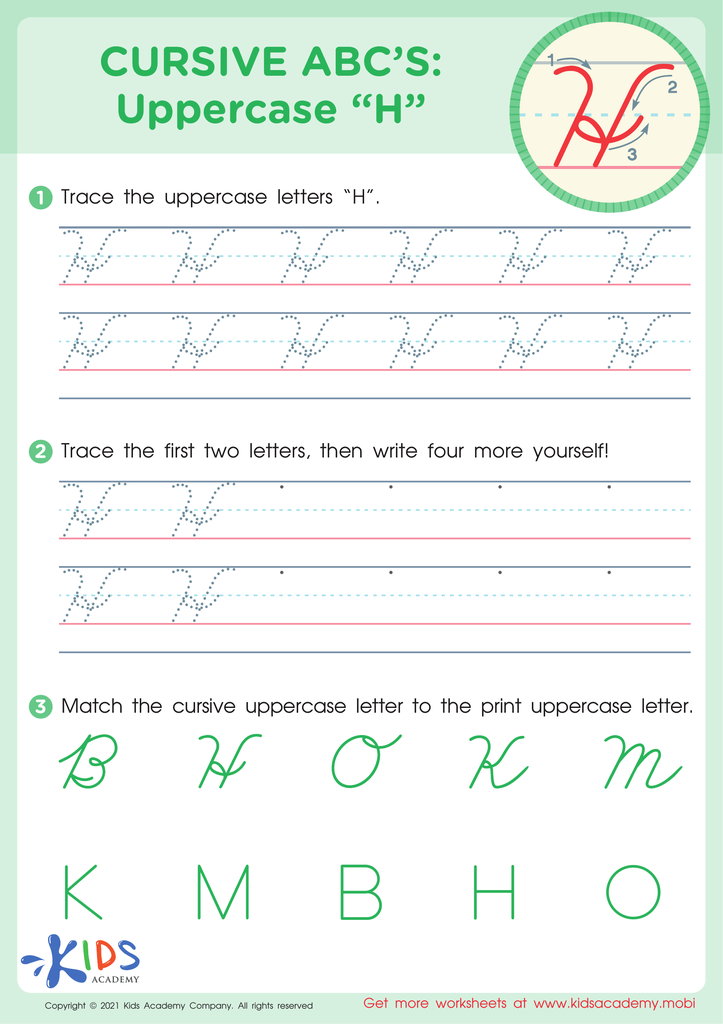

Cursive ABCs: Uppercase H
Cursive writing practice is an essential skill for children aged 5-9, and both parents and teachers should prioritize it for several reasons. First, cursive writing enhances fine motor skills as children develop the coordination needed to form letters fluidly. This practice supports overall handwriting improvement and assists with the transition from printing to more complex writing styles.
Second, cursive writing encourages cognitive development. The connection between letters when forming words may enhance learning, as it requires children to think about the flow of language, which can improve their spelling and reading comprehension. Research suggests that students who practice cursive tend to retain information better, fostering effective learning habits.
Moreover, cursive writing promotes personal expression and creativity. For young children, the unique shapes in cursive allow them to develop their own signature styles, providing opportunities for self-identity and artistic expression.
Lastly, understanding cursive is essential in our increasingly technology-oriented world; many historical documents and letters are written in cursive, limiting appreciation of written communication if children cannot read it.
In conclusion, establishing cursive writing practice at an early age contributes to children’s physical, cognitive, and emotional development, making it a vital component of their education.






